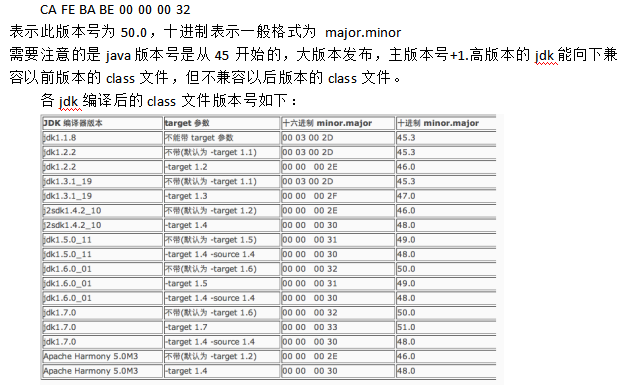
Spring Boot Admin监控平台搭建及定制化开发:从零到一的实战指南
作为一名长期奋战在一线的开发者,我深知系统监控的重要性。记得有一次线上服务出现内存泄漏,由于缺乏有效的监控手段,我们花了整整一天才定位到问题。从那以后,我开始深入研究Spring Boot Admin这个强大的监控平台。今天,我将分享如何从零搭建Spring Boot Admin,并进行深度定制化开发。
一、环境准备与基础搭建
首先,我们需要搭建基础的Spring Boot Admin Server。我推荐使用Spring Boot 2.7.x版本,这个版本相对稳定且功能完善。
de.codecentric
spring-boot-admin-starter-server
2.7.10
org.springframework.boot
spring-boot-starter-web
接下来配置启动类,这里有个小技巧:记得添加@EnableAdminServer注解,我第一次搭建时就忘记了这个关键注解,导致服务无法正常启动。
@SpringBootApplication
@EnableAdminServer
public class AdminServerApplication {
public static void main(String[] args) {
SpringApplication.run(AdminServerApplication.class, args);
}
}
在application.yml中配置基本参数:
server:
port: 8080
spring:
application:
name: admin-server
二、客户端接入配置
要让业务服务能够被监控,需要在客户端添加相应的依赖和配置。这里我建议使用actuator提供的所有端点,以便获得完整的监控数据。
de.codecentric
spring-boot-admin-starter-client
2.7.10
org.springframework.boot
spring-boot-starter-actuator
客户端配置中,需要特别注意management.endpoints的暴露设置:
spring:
boot:
admin:
client:
url: http://localhost:8080
instance:
name: user-service
management:
endpoints:
web:
exposure:
include: "*"
endpoint:
health:
show-details: always
三、安全认证配置
在实际生产环境中,监控平台的安全性至关重要。我建议使用Spring Security来添加基础认证:
@Configuration
public class SecurityConfig {
@Bean
public SecurityFilterChain filterChain(HttpSecurity http) throws Exception {
http.authorizeRequests()
.anyRequest().authenticated()
.and()
.httpBasic()
.and()
.csrf().disable();
return http.build();
}
@Bean
public UserDetailsService users() {
UserDetails user = User.builder()
.username("admin")
.password("{bcrypt}$2a$10$GRLdNijSQMUvl/au9ofL.eDwmoohzzS7.rmNSJZ.0FxO/BTk76klW")
.roles("ADMIN")
.build();
return new InMemoryUserDetailsManager(user);
}
}
记得在客户端配置中添加认证信息:
spring:
boot:
admin:
client:
username: admin
password: password
四、自定义监控指标
Spring Boot Admin的强大之处在于它的可扩展性。我们可以自定义监控指标来满足特定业务需求。比如,我想监控某个关键接口的调用次数:
@Component
public class CustomHealthIndicator implements HealthIndicator {
private final AtomicLong requestCount = new AtomicLong(0);
@Override
public Health health() {
long count = requestCount.get();
Health.Builder status = count > 1000 ? Health.down() : Health.up();
return status
.withDetail("requestCount", count)
.withDetail("threshold", 1000)
.build();
}
public void increment() {
requestCount.incrementAndGet();
}
}
五、通知配置
监控的价值在于及时发现问题。我配置了邮件通知,当服务状态发生变化时能够立即收到提醒:
spring:
boot:
admin:
notify:
mail:
to: admin@company.com
from: noreply@company.com
enabled: true
mail:
host: smtp.company.com
username: admin
password: password
如果需要更复杂的通知逻辑,可以实现自定义的Notifier:
@Component
public class CustomNotifier extends AbstractEventNotifier {
@Override
protected Mono doNotify(InstanceEvent event, Instance instance) {
return Mono.fromRunnable(() -> {
if (event instanceof InstanceStatusChangedEvent) {
// 发送自定义通知
sendCustomAlert(instance, (InstanceStatusChangedEvent) event);
}
});
}
}
六、界面定制化
为了让监控界面更符合团队的使用习惯,我们可以对UI进行定制。比如添加自定义的视图组件:
// static/custom/custom.js
SBA.use({
install({viewRegistry, sidebar}) {
viewRegistry.addView({
name: 'custom-monitor',
path: '/custom',
component: {
template: `自定义监控面板`
},
label: '自定义监控',
order: 1000
});
}
});
七、部署与优化建议
在部署过程中,我总结了一些经验教训:
1. 生产环境建议使用集群部署,避免单点故障
2. 合理配置监控数据的保留时间,避免存储空间过度占用
3. 对于微服务架构,建议按业务域划分不同的Admin Server
4. 定期检查客户端连接状态,确保监控覆盖完整
通过这套监控方案,我们团队的线上问题发现时间从小时级别缩短到了分钟级别。记得有一次,通过自定义的业务指标监控,我们在用户感知之前就发现了一个潜在的性能瓶颈,及时进行了优化。
Spring Boot Admin的灵活性和扩展性让我们能够根据实际业务需求进行深度定制。希望这篇实战指南能够帮助你在监控平台建设上少走弯路,构建出更适合自己业务场景的监控体系。
2. 分享目的仅供大家学习和交流,您必须在下载后24小时内删除!
3. 不得使用于非法商业用途,不得违反国家法律。否则后果自负!
4. 本站提供的源码、模板、插件等等其他资源,都不包含技术服务请大家谅解!
5. 如有链接无法下载、失效或广告,请联系管理员处理!
6. 本站资源售价只是赞助,收取费用仅维持本站的日常运营所需!
源码库 » Spring Boot Admin监控平台搭建及定制化开发





